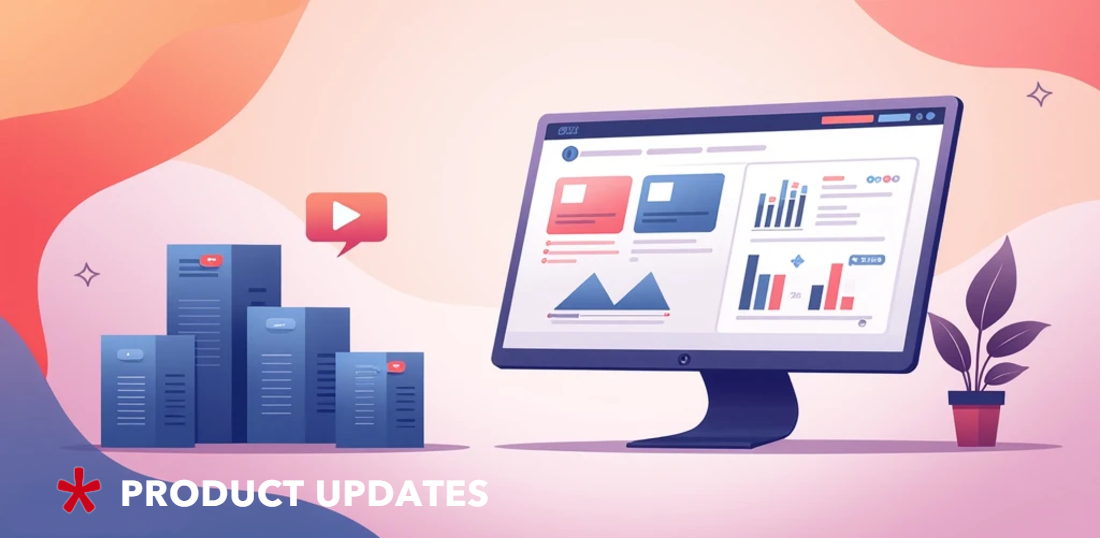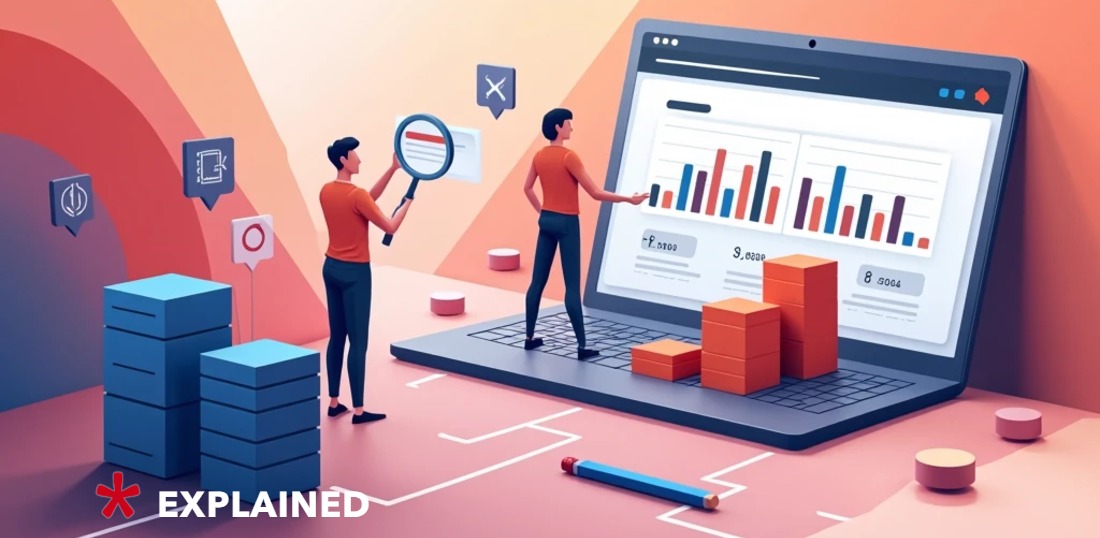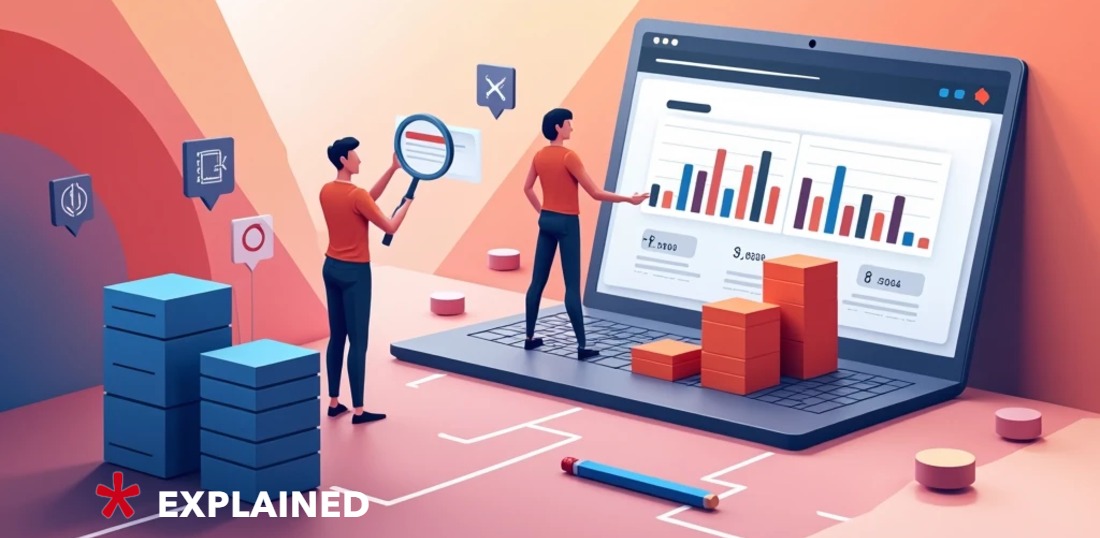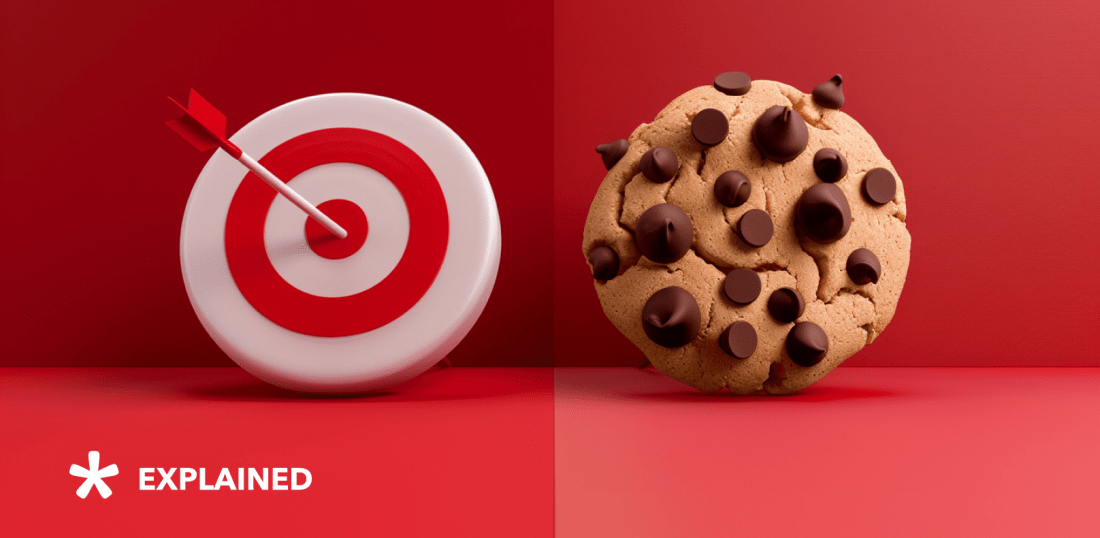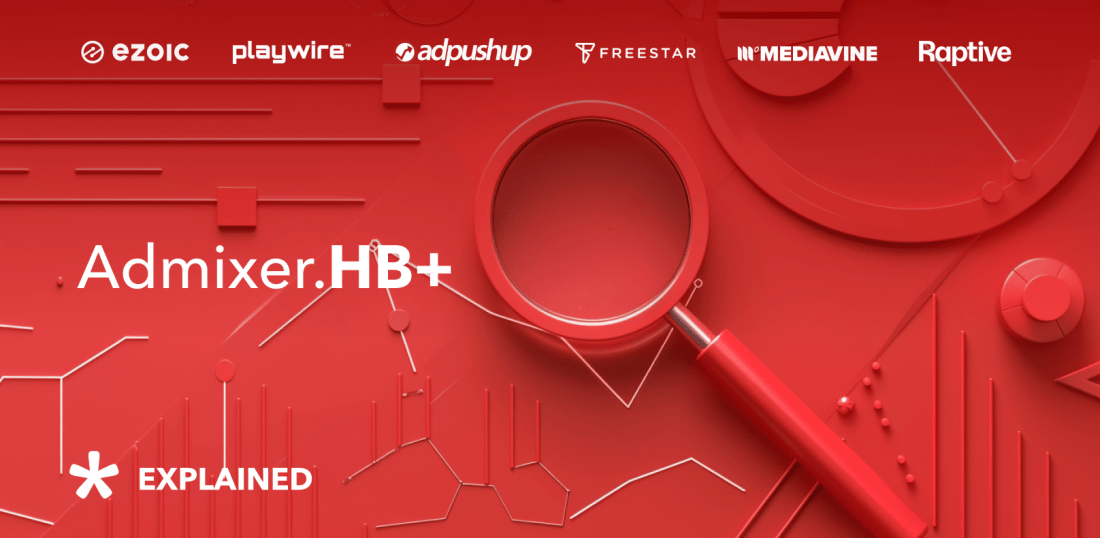
Top Header Bidding Platforms: A Competitive Analysis
Choosing the right header bidding solution is essential for maximizing ad revenue and optimizing publisher yield. This article provides a comprehensive header bidding platform comparison and comparative overview of:
Key Considerations
Before diving in, remember that the ideal HB solution depends on these factors:
- Your Publisher Needs: ad formats, level of control (direct deals management, own bidders integration, etc.)
- Technical Expertise: solution support and customization desired
We’ll examine each contender through the lens of these criteria groups:
- Service Terms
- Monetization Stack
- Ads.txt Management
- Ad Formats
- Ad Unit Settings
- Auction Settings
- Brand Safety and Ad Experience
- Inventory Enrichment and Addressability
- External Integrations Support
- Reporting and Analytics
- Payments
1. Service Terms: Finding the Right Fit for Your Publishing Needs
Header bidding providers offer different service models and contract terms. Understanding these options is essential for choosing a solution that aligns with your needs for control, support, and flexibility.
Self-Serve vs. Managed Services
- Self-Serve: You manage most aspects of header bidding setup, optimization, and demand partner relationships yourself. This offers maximum control but requires technical expertise and established direct partnerships with SSPs. This model is ideal for large publishers with in-house ad operations teams, direct demand partner contracts, and possibly a dedicated direct sales team that manages direct deals.
Admixer.HB+ and Ezoic are providers that offer self-serve options (both also offer managed options).
- Managed Services: This is ideal for more hands-off monetization when the provider takes on the responsibility of managing header bidding operations. The provider handles setup, ongoing optimization, and technical troubleshooting related to demand partner management. This allows publishers to focus on their core business while their ad revenue is maximized.
Playwire, AdPushup, Freestar, Mediavine, and Raptive primarily focus on providing managed services.
Key Takeaway: Even with managed services, you still retain control over your inventory settings (ad units, placement, refresh, etc.). The primary difference is who manages the relationships and optimization of demand partners.
Lock-in Contracts: Consider Your Commitment Level
- Free Contract: Provides flexibility to test a platform or switch if it’s not meeting your needs.
Admixer.HB+ and Ezoic stand out by offering commitment-free contracts.
- Exclusive Contract: These can lock you in for several months or longer. This may be suitable if you’re confident in the provider and comfortable with a committed partnership.
Playwire requires a 5-month commitment, AdPushup has a 3-month minimum, and Raptive requires a 30-day notice to terminate a contract, while providers like Freestar and Mediavine also involve lock-in contracts (lengths may vary).
Key Takeaway: Even within the self-serve or managed categories, providers often vary in the specific level of commitment they require. Research this carefully!
2. Monetization Stack: Building Blocks for Maximizing Revenue
Your header bidding solution’s monetization stack refers to the core components and connections that determine your ability to generate ad revenue. Let’s break it down the key elements:
HB Wrapper: The Technical Heart
- This is code that lives on your website. It sends ad requests to all demand sources and manages the auction for the highest-paying ad.
- Consider factors like the wrapper’s speed (which affects site performance), ease of integration, and any advanced features for customization.
- Prebid, the open-source foundation for many header bidding solutions, regularly releases updates with performance enhancements, bug fixes, and security patches. Ensure your chosen provider promptly updates its wrapper to incorporate the latest Prebid versions.
Providers are continuously improving their wrappers, so it’s best to inquire about the latest features and capabilities directly.
Demand Sources: Where Your Ads Come From
- Google Ad Manager (with ADX): Google Ad Exchange is the world’s largest programmatic marketplace, and it requires integration with Google Ad Manager (GAM) for access. Some header bidding providers offer a pre-integrated GAM for streamlined setup, hands-off management, and automatic ADX access. However, if you have your own GAM account, you may be able to integrate it with your header bidding solution. In addition to Google Ad Exchange, a partner-managed GAM account also includes Open Bidding connections that expand access to demand partners beyond Google ADX (ad networks, exchanges, specialized buyers), increasing competition and often leading to higher revenue from GAM.
- Unique Demand: Some HB providers have direct relationships with advertisers or access specialized ad networks others don’t. This unique demand can provide exclusive and potentially lucrative opportunities.
Admixer.HB+, Playwire, Freestar, Mediavine, and Raptive differentiate themselves by offering access to unique demand sources.
Ezoic’s unique demand appears more limited, while AdPushup primarily focuses on working with existing exchanges.
It’s Not Just About Quantity
- While a wide network of ad partners can be beneficial, don’t prioritize the total number above all. Ad quality, relevance to your audience, and the reliability of payments matter just as much if not more.
AdPushup boasts the highest number of ad partners, followed by Raptive.
Admixer.HB+ has the fewest partners, necessitating a focus on high-quality connections.
Key Takeaway: It’s important to investigate the specific mix of demand sources each provider offers and the capabilities of their HB wrapper. Each platform will have its strengths in this area.
3. Ads.txt Management: Protecting Your Revenue from Fraud
An ads.txt file is like a public list of who’s authorized to sell ad space on your website. It’s a crucial tool in combating ad fraud, helping ensure you get paid for the ads that appear on your site.
The Value of Verification Tools
- Many header bidding providers offer built-in ads.txt verification tools or dynamic ads.txt hosting to streamline a potentially complex process.
Admixer.HB+, Ezoic, Playwire, AdPushup, Mediavine, Raptive, and Freestar all include variations of these helpful tools.
Key Takeaway: If you’re serious about ad revenue, choosing a header bidding solution with ads.txt management features can save you valuable time and help safeguard your earnings. However, even with the best tools, regularly checking and updating your ads.txt file is crucial for ongoing protection against fraud, regardless of which provider you choose.
4. Ad Formats: Catering to Varied Inventory and Advertiser Demand
Header bidding solutions should support a range of ad formats to maximize monetization opportunities across all areas of your website. Let’s break down the key options and see how providers compare:
The Basics
- Standard Display Ads: These are the classic image or text ads that appear in various placements within your content.
All analyzed options (Admixer.HB+, Ezoic, Playwire, AdPushup, Freestar, Mediavine, and Raptive) support these fundamental formats.
- Sticky Ads: These stay “stuck” to a part of the screen as users scroll, offering high visibility.
Similarly, all solutions cover sticky ads, ensuring compatibility with this popular format.
- Interstitial Ads: These temporarily cover the whole page, often shown at transition points in a user’s journey.
Admixer.HB+, Ezoic, Playwire, Freestar, Mediavine, and Raptive offer interstitial ad support. AdPushup appears to lack this capability, potentially limiting monetization opportunities for these placements.
Video Expansion
- In-banner Video Ads: These are video ads played within a standard display ad placement.
Admixer.HB+ supports in-banner video ads, offering a basic video solution.
- In-stream and Outstream Video Ads: These formats play before, during, or after other video content (in-stream) or start playing automatically as a user scrolls (outstream).
Ezoic, Playwire, AdPushup, Freestar, Mediavine, and Raptive offer a wider range of video ad formats, providing greater flexibility for video-heavy inventory.
Why Variety Matters
- Different advertisers have preferences for different formats. The more your solution supports, the wider the pool of potential buyers for your inventory.
- Having varied formats allows you to experiment and find the best-performing mix for your specific website layout and audience.
Key Takeaway: When considering video ads, also evaluate each provider’s support for different video ad players and specifications. This ensures compatibility with how you want to integrate video and can make a huge difference in successful monetization.
5. Ad Unit Settings: Optimizing Ad Placement and Performance
Header bidding solutions should give you flexibility when managing your ad inventory for maximum revenue. Let’s look at the key features to consider and how providers differ:
Multi Ad-Size Support
- Supporting multiple standard ad sizes (like 300×250, 728×90, etc.) for each placement on your website is crucial. Different advertisers seek different-sized ad spaces. Greater variety ensures you’re not accidentally excluding potential bidders. In addition, more buyers are eligible to compete for each placement, which creates a denser, more competitive auction. This often drives higher bids and increased revenue for you.
Thankfully, all analyzed solutions (Admixer.HB+, Ezoic, Playwire, AdPushup, Freestar, Mediavine, and Raptive) offer this core capability.
In-View Rendering
- This feature means ads only load when a user actually scrolls them into view. This boosts ad viewability (important to advertisers) and improves the user experience by not loading ads no one will see.
Again, all solutions listed include in-view rendering capabilities.
Ad Refresh
- This lets you re-run the ad auction for a particular ad slot after a set time. Why is this useful? Imagine a user spends 5 minutes reading an article on your website. With ad refresh, you can set the ad slot to refresh every couple of minutes, potentially showing 3 different ads during that user’s visit. This means more ad impressions and, consequently, more opportunities to generate revenue.
Admixer.HB+, Playwire, AdPushup, Freestar, Mediavine, and Raptive offer ad refresh functionality.
Ezoic appears to limit ad refresh capabilities to sticky sidebar ads only, offering less granular control for publishers seeking maximum optimization options.
Key Takeaway: Many providers offer these core configuration options, providing a solid foundation for most publishers. Some providers might have proprietary ad layout optimization tools or advanced refresh features beyond the basics covered here. If this is important to you, investigate specifics with each provider.
6. Auction Settings: Maximizing Revenue While Protecting Your Interests
Header bidding solutions should give you tools to take charge of the behind-the-scenes auction process where your ad space is sold. Here’s what to look for and how providers compare:
CPM Floors
- A “CPM floor” is the minimum price you’re willing to accept for each thousand ad impressions.
All the analyzed solutions (Admixer.HB+, Ezoic, Playwire, AdPushup, Freestar, Mediavine, and Raptive) offer CPM floor management capabilities, ensuring a baseline level of protection for your inventory.
Auction Timeouts
- This setting determines how long you wait for all the bids to come in.
All listed vendors also offer auction timeout management. However, the level of granularity in how you can adjust these settings may vary.
Direct Deals
- These are agreements made directly with specific advertisers, guaranteeing them ad space in exchange for a set price.
Solutions with direct deal prioritization let you manage how these fit into your overall auction setup. Admixer.HB+, Ezoic, Playwire, AdPushup, Freestar, Mediavine, and Raptive offer this functionality.
Key Takeaway: It’s important to find a solution that offers fine-grained control over these aspects. Here are some things to consider:
- The “right” settings depend on your priorities. Consider whether you value maximizing every single impression versus keeping your site loading quickly.
- Some solutions may be more transparent than others about how their auction mechanisms work. Check if detailed documentation or support resources are available.
7. Brand Safety and Ad Experience: Protecting Your Reputation and Users
Header bidding solutions should go beyond revenue to help you maintain a safe and enjoyable experience for your website visitors. Let’s dive into the tools offered:
Bad-Ad Filtering
These can include ads that are misleading, offensive, or promote harmful products or services. They damage your site’s reputation and drive users away.
- Many header bidding platforms partner with companies specializing in identifying and blocking bad ads before they appear on your site.
Admixer.HB+ incorporates The Media Trust’s filtering for proactive protection against bad ads.
Playwire provides a suite of filtering options, including Ad Lightning, Clean.io, and MOAT.
Freestar, Mediavine, and Raptive also appear to offer bad-ad filtering capabilities. Ask these providers about their specific partners.
Ezoic and AdPushup don’t seem to have built-in bad-ad filtering, potentially requiring publishers to utilize external tools or manual processes.
Advertiser / Category Blocking
These tools give you the power to block specific advertisers or entire categories (like gambling or politics) if they don’t align with your brand.
All analyzed solutions (Admixer.HB+, Ezoic, Playwire, AdPushup, Freestar, Mediavine, and Raptive) provide this level of control.
Key Takeaway: Many providers offer these core protective features, but the specific partners and level of granular control can vary. Here’s what to dig deeper into:
- Filtering Partners: Research the reputation and effectiveness of any filtering companies a header bidding platform partners with.
- Customization: Find out how easily you can adjust settings or add your own specific blocks beyond what the platform provides by default.
8. Inventory Enrichment and Addressability: Targeting for Relevance and a Cookieless Future
Enhancing your ad inventory with additional data can make it more appealing to advertisers and help you navigate changes in online privacy. Here’s where solutions differ:
Contextual Categorization
- This involves assigning content categories to your website and its specific pages so that information is passed through to advertisers (like “sports,” “home decor,” etc.).
Admixer.HB+, AdPushup, Freestar, Mediavine, and Raptive offer contextual categorization tools. This helps target ads to the right audience and increase their effectiveness.
Ezoic and Playwire don’t appear to have this feature built-in, potentially limiting contextual advertising demand.
Cookieless User IDs
- Traditional tracking cookies are being phased out. Cookieless IDs are alternative ways to identify users without relying on these cookies.
- While all providers seem to understand the importance of preparing for a cookieless future, they support different solutions, impacting your ability to target ads.
Admixer.HB+ leverages its integrated solutions Admixer ID (proprietary Admixer technology), 33Across Lexicon ID, SharedID, and Lotame Panorama ID.
Ezoic, Playwire, AdPushup, Freestar, Mediavine, and Raptive support an array of established cookieless IDs like Unified ID, SharedID, ID5, and others. This wide support may give these providers an edge in adaptability.
Key Takeaway: Richer data often translates to higher bids from advertisers. Plus, being prepared for the cookieless future protects your revenue in the long run. Consider the following:
- Your Audience: If you have precise audience segments, ensuring your solution supports the cookieless ID solutions relevant to those segments is important.
- Flexibility: Given the rapidly evolving landscape, choosing a provider with wide-ranging cookieless ID support might offer greater adaptability for future shifts.
9. External Integrations Support: Adapting to Your Needs
Header bidding solutions offer a diverse array of approaches, each with its strengths and potential compatibility with your existing infrastructure. As a publisher, your decision should be guided by your current tech stack, desired level of control, and willingness to embrace external demand sources. Here’s what to consider:
Google Ad Manager (GAM) Integration
- GAM is the most popular ad server for managing direct ad deals with advertisers, which also provides access to Google Ad Exchange and Open Bidding in its advanced configurations.
Admixer.HB+, Ezoic, Playwire, AdPushup, and Freestar allow you to choose between enabling their managed GAM and integrating your account. This is essential if you heavily rely on GAM for direct deal management or complex ad setups. On the other hand, retaining GAM operations in-house may limit your access to advanced monetization features, such as Google ADX and Open Bidding, that are usually enabled on the HB provider’s side.
Mediavine and Raptive require you to hand over ad server management to them. This might be a deal breaker for the publishers willing to set up direct deals with advertisers themselves. This might be a limitation if GAM is integral to your workflow.
Publisher-Managed Prebid Integrations
- Prebid is a framework offering access to a wide range of SSPs that can be integrated into the header bidding wrapper.
Admixer.HB+, Ezoic, and AdPushup allow you to add your Prebid partners to the header bidding auction. This grants maximum flexibility for adding niche ad networks you may already be working with.
Playwire, Freestar, Mediavine, and Raptive appear to limit publishers to their pre-configured demand partners, potentially reducing customization options.
Tag-based Mediation
- This lets you easily bring additional ad networks that do not support the header bidding / Prebid framework. It can be a simple way to supplement your header bidding with extra demand when needed.
Admixer.HB+, Ezoic, and AdPushup support tag-based mediation. If you want to set up fallback monetization with a secondary network (such as AdSense), these solutions make it easier.
Playwire, Freestar, Mediavine, and Raptive don’t seem to offer this capability.
Key Takeaway: The ideal header bidding solution should adapt to your unique tech stack, respect your desired control levels, and align with your demand source preferences. Here’s what to ask yourself:
- Must-Have Integrations: Are there specific tools outside of header bidding that are crucial to your business, and would integration with a header bidding platform be a deal-breaker if it’s not supported?
- Future Plans: Consider if you’re planning to expand your ad tech stack and want the flexibility to integrate new solutions easily.
10. Reporting and Analytics: Data-Driven Optimization
Header bidding solutions should give you the insights to make informed decisions that maximize your revenue. Here’s how providers can differ:
Reporting Refresh Frequency
- Real-time updates mean you see what’s happening as it happens, empowering you to react quickly
Admixer.HB+, Playwire, AdPushup, and Freestar offer real-time reporting updates.
- Less frequent updates can create a delay, limiting your ability to make timely adjustments.
Ezoic, Mediavine, and Raptive limit updates to once per day.
Individual Bidder Performance
- Knowing how each demand source is really performing lets you fine-tune things. Solutions offering this empower you to spot underperformers or uncover hidden gems.
Admixer.HB+, Ezoic, Playwire, AdPushup, and Freestar provide insights into individual bidder performance.
Mediavine and Raptive seem to lack this granular reporting, potentially obscuring a key part of the optimization puzzle.
Key Takeaway: The best reporting is useless if you don’t act on the data. It’s helpful to consider which of these points matter most to you:
- Speed: Do you need to see updates the moment they happen to make quick tests or troubleshoot issues?
- Granularity: Will knowing bidder-level performance make a major difference to how you optimize?
11. Payments: Getting Paid for Your Ad Inventory
Header bidding solutions don’t just affect how much you earn, but also when and how you get paid. Consider these differences:
Payment Terms
- Net 45, Net 60, etc., refer to how many days after a given month it takes to receive the payment.
- Admixer.HB+, Ezoic, AdPushup, and Raptive offer the industry-standard Net 45 payment terms.
- Freestar extends it slightly to Net 46.
- Playwire has a longer Net 60 period, lengthening the time to get your earnings.
- Mediavine has the longest payment terms at Net 65.
Payment Methods
- More options (PayPal, wire transfer, etc.,) provide flexibility. Consider any fees associated with your preferred method and how platforms compare.
Admixer.HB+ and Freestar support a good variety of payment methods, including PayPal, wire transfers, SEPA, and ACH.
Ezoic also boasts a wide selection, including Payoneer, Wise, and Checks.
Playwire, AdPushup, Mediavine, and Raptive focus on the essentials – PayPal, wire transfers, and in some cases, ACH/Checks.
Minimum Threshold
- This is the amount you need to earn before a payout is triggered.
Ezoic and Mediavine have the lowest minimum payout thresholds at $20 and $25 respectively, which is great for smaller sites.
Raptive is also quite low at $25.
AdPushup requires a $50 minimum, while Freestar has a $100 threshold.
Admixer.HB+ has the highest threshold at $200, potentially making it less suitable for very small publishers. However, Admixer.HB+ covers transfer fees and commissions.
Key Takeaway: It’s not always who pays the most per ad. Choosing a solution with terms that match your financial needs is just as important. Think about:
- Cash Flow: How often do you need access to your earnings?
- Small Sites: If you have lower traffic, a low minimum threshold might make a major difference in being able to access your money.
- During negotiations with header bidding providers, clarify who bears the responsibility for payment fees and commissions.
Conclusion
Choosing the right header bidding platform is a complex decision with no single universal answer. The best choice for you depends entirely on your individual needs as a publisher. Factors like your inventory, desired level of control, traffic patterns, and technical expertise all play a significant role.
This article aims to provide a comparison of key features and differences between popular header bidding platforms. Use this knowledge as a starting point, but always conduct your own in-depth research with each provider that interests you. Ask clarifying questions about their specific offerings, and thoroughly evaluate how well they align with your goals to find the perfect fit.

